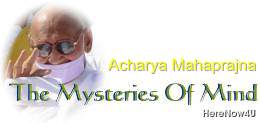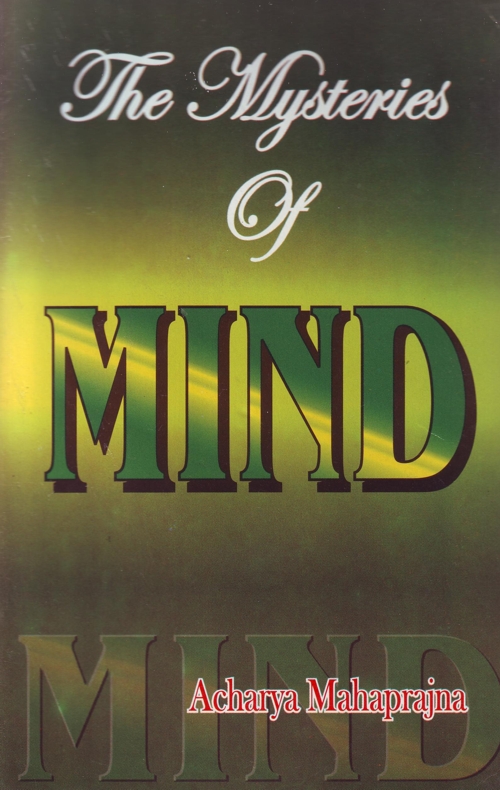
Synopsis:
- The basis of development - search for truth and also its practice.
- Change the changeable; let the eternal remain as it is.
- Clearing away the impurities polluting the mind.
- Change in attitude.
- Change in human relations.
- Search for such lone island where the wastage of energy is minimum and the scope of development of new energy is maximum.
- Causes of the loss of energy:
-
- Constant muscular exertion.
- Additional indulgence.
- Bad deeds and bad ideas.
- Uncontrolled thoughts and sensations.
- Put your energy to proper use. It is meaningless without use.
- Right direction of the use of energy:
-
- One should know oneself: one should realize one's
own self.
- One should know oneself: one should realize one's
- Three stages of achievement:
-
- Natural, like mastering the circumstances.
- Awakening of consciousness.
- End of delusion.
- The aim of practice for self-realization:
-
- Pacifying the passions.
- Purity of consciousness.
The Unknown Destination
The practitioner of sadhana needs enlightenment so that he may see things. We cannot see anything in darkness we can see everything in the light. The more light, the clearer the visibility. Enlightenment enables us to see both, what is apparent and what is hidden. We can see and recognise what is apparent in dim light also but we need brighter light to see what is hidden and unknown. The known part of the world is very small as compared with the unknown part of it. It is like a drop in the ocean. The unknown cannot be explained by analogy.
The range of the sense organs is a very much limited range. The ears can hear the sound of a particular frequency only. If all the sounds of the world were to invade our eardrums, they would burst. The entire atmosphere in which we live is continuously vibrating. We would be annihilated if we caught all these vibrations. Generally we see only a few forms, hear only a few sounds and utilize only a few objects. The remaining world is outside our comprehension. That is why we are eager to know the unknown. Search for the unknown is a perpetual search for us. Man's consciousness has always been engaged in the search for the unknown. The entire evolution of man has taken place because of his basic instinct for the search for truth. This instinct is not found in the other animals, and therefore, they have become standardized and stereotyped. On the other hand, man has progressed tremendously and is still progressing. All this is due to the powers of man's consciousness and his instinct for search for truth. The more we search for truth, the more do the areas of consciousness expand. We also increase our potentials and capabilities in the course of our search for truth.
We utilize only a small part of our knowledge. The rest of it remains only hypothetical knowledge the truth of which is yet to be ascertained. The purpose of sadhana and perceptive meditation is the search for truth. We are engaged in a perpetual pilgrimage to the shrine of truth. We come across ever-newer truths in the course of this pilgrimage. We come to know that there are things in the world that can be changed and that there are things, which do not and cannot be changed. We should try to change that which can be changed and leave that alone which cannot be changed. It is one of the principles of sadhana that we should change that which is transitory and perishable and that which is permanent and changeless will remain what it is. That which is perishable must perish.
We transform ourselves as well as the world through sadhana. Breath goes on changing. We should, therefore, try to change the phases of breath. The first condition of sadhana is to change the breathing process. We need a lot of vital energy in order to pursue the unknown. Breath serves as a fuel for vital energy. The more the fuel, the more will be the vital energy and the easier our pilgrimage.
One engaged in perceptive meditation must first change short breathing into long breathing. Normally we breathe fifteen to seventeen times to a minute. We may either increase or decrease the length of breathing. Impulsive people who are not given to sadhana take short breath. This is from thirty to fifty or fifty to sixty times/to a minute. The number of inhaling increases in the case of those who are impulsive and passionate. An increased number of breaths and the lessening of its momentum have an adverse effect on mental health. On the other hand, one who is engaged in perceptive meditation takes long breaths. Mild, long and subtle breathing and a change in the direction of breathing are all attempted by the practitioner in order to take to long breathing. This results in peace of mind and the extinction of all kinds of excitements, passions desires and impulses. Short breathing excites passions, desires and impulses. When you come to feel that you are going to be excited, you should immediately begin long breathing. It will stop excitement. The practitioner of meditation knows the various centres of his mind, which activate our tendencies. He can stop or activate these tendencies by concentrating on the centres concerned with these tendencies. Thus instead of becoming a prey to the tendencies he becomes their controller and master.
The first thing a practitioner has to do is to change the process of breathing. He should not take to long breathing as exercise for improving his health. If he did so, he will not be able to take advantage of the internal changes, which result from the perception of the breathing process. Long breathing is not a physical exercise only. It is much more than that. It is not simple, pranayama. Its purpose is to subdue impulses, emotions, desires and excitement.
The second aim of sadhana is to change the base of the activities of the body. Change in the direction of breathings brings about changes in the body. Diseases happen in the body only when the centres of consciousness remain dormant. If every particle of the body becomes energised and aroused, there will be no place left for excitements and diseases. Perceptive meditation changes the very functioning of the body and gears it to a new end. It activates, the centres of knowledge so much that they become capable of facing all kinds of situations. Low vitality does not allow the body to resist external influences. High potency and broad-spectrum medicines lower the vitality of the body. Meditation, on the other hand, maintains the vitality of the body and activates it and the mind. Let us, therefore, change the functioning of the body, open new horizons of the mind and change our habits and nature. It is generally believed that actions and reactions are the laws of human nature. This has given birth to the policy of a tooth for a tooth and an eye for an eye. If one does not follow this policy, he is supposed to be a coward. It is quite natural for man to react to situations and to counter attack when he is attacked. He has been trained to do so since his childhood. When a child demands some thing and gets it, it begins to beam with pleasure. On the other hand, when it is denied, it begins to weep. Joy and sorrow have, therefore, been taken to be natural.
The practitioner avoids both joy and sorrow because both of them are harmful reactions. He remains fully self-watchful. He has faith in action rather than in reaction. This brings about a change in his natural behaviour also. Psychologists tell us that the inherited characteristics of man do not change. The philosophy of sadhana, however, takes a different view; sadhana cannot afford to discard the notion of change. If breath, mind, and human nature were immutable, sadhana will have no leg to stand on. Meditation is capable of changing them. However, I should warn you that you should not be misled by false promises. Of course, you cannot change yourself in the course of a ten days' sadhana. After having completed an exercise the practitioner should take stock of himself and try to know if his impulses, emotional set up and his tendency to confrontation, his sex desires, etc. have been reduced. If they have not been reduced, he should not be dejected. Let us remember that a sadhana camp is not the cell of a magician. It is meant for imparting a short course of instructions. It, of course, gives the participant an assurance that things can be changed. It enlightens him to find his own way. It is for the practitioner to exert himself and to walk on it. The more be exerts himself, the more enlightened and active will he become. If, in spite of his enlightenment, he remains inactive and lazy, he will remain where he is. The wages of a labourer are fixed on the basis of the amount of labour put in by him. This holds good in sadhana also. The spiritual gains of a practitioner are determined by the amount of exertion he puts in. Progress comes to a standstill if there is a discrepancy between the two.
 Acharya Mahaprajna
Acharya Mahaprajna

